2013 Nissan Pathfinder Vs 2013 Hyundai Santa Fe

For decades the mainstay of family transportation was the station wagon. This sensible form of transportation could take the ‘fam’ and their gear anywhere they wanted. But by the 1980s, the station wagon had fallen out of favor. Blame it on the popularity of the minivan or maybe the Queen Family Truckster, but the wagon had suddenly become tragically uncool.
Since then, the minivan has come and gone as the favorite automotive choice for families, followed by the body-on-frame sport utility vehicle. After initial sales success, both have been abandoned by many in their key demographic. Why? Simple: whatever vehicles suburban families snap up today are avoided like the plague tomorrow. Heaven forbid that expensive new piece of metal sitting in the driveway has the stigma of ‘suburban soccer mobile’.
3-ROW CROSSOVERS NOW IN VOGUE
And so the cycle continues. Now, it is the full-size crossover’s turn. Many manufacturers, like Honda, Chevrolet, Ford and Toyota, have been playing in this field for years. But there are two newcomers this year competing for the title of best family vehicle; the Nissan Pathfinder and the Hyundai Santa Fe. Nissan is taking the same approach Ford did with the Explorer by turning the off-road capable Pathfinder in a three-row soft-roader. Based on a car platform, the Pathfinder is available as a front-wheel drive (FWD) vehicle for the first time.
The 2013 Pathfinder has an aggressive look and features Nissan’s trademark nose. This means an overdose of plastic chrome on the front grill and a massive Nissan logo. The rest of the vehicle looks good though, especially the optional 20-inch wheels and flowing back three-quarter section.
COMPARE: More Specs on the Nissan Pathfinder vs Hyundai Santa Fe
Also new for 2013 is the Hyundai Santa Fe. Earlier in the year came the five passenger Santa Fe Sport that is more in line size-wise with 2012 model. Joining it now is a regular Santa Fe that is stretched out to accommodate a 3rd row of seating, effectively replacing the largely unsuccessful Veracruz.
It continues the styling theme started by the handsome Sport model last year. The three bar grille has, however, been replaced by a five bar grille and overall it’s not as well proportioned as its smaller sibling and the rear quarters look rather minivan-like; not a good thing in this segment.
VALUE vs. LUXURY
Both vehicles start at a similar base price in this competitive market with the $28,350 Santa Fe barley undercutting the $28,650 Pathfinder. But venture further up the model range and the pricing gap widens. The top spec 2013 Hyundai Santa Fe Limited Technology AWD comes in at $37,750 while the fully loaded 2013 Nissan Pathfinder Platinum Premium AWD rings in at a steep $44,295.
Many potential buyers may stop here and go no further. The Santa Fe is much cheaper. It wins; game over. But can it be this black and white? Or is the Pathfinder really worth an extra $6,500? Just what exactly enables Nissan to charge such a lofty premium for a family vehicle? Well for starters, it is important to note each vehicle seems tailored for those at different points in the family life cycle.
YOUNG FAMILY vs. OLDER FAMILY
The Pathfinder feels more suited to a family with teenagers. Exclusive features in the Pathfinder like cooled front seats, dual in-headrest video screens for second row passengers and a plethora of parking cameras (great for young drivers learning the craft) all seem tailored towards a more mature family… with more money to spend.
The Santa Fe on the other hand does have a few exclusive features not found in the Pathfinder like HID headlights, LED eyebrows, manual window screens for the second row and adjustable steering. The cool lighting technology seems more geared towards a less traditional buyer while the baby-seat friendly captain’s chairs with built-in second row sun screens make this vehicle more suited for a younger family. As does the price.
Both of these vehicles are also equipped with modern conveniences like heated seats, panoramic sunroofs and power lift gates. One thing we found odd though was the lack of any sort of blind-spot monitoring system on either vehicle. A strange omission for a fully loaded vehicle this size.
The interior of the Pathfinder once again is a better fit for an older crowd, while the Santa Fe hits the right points for a younger buyer. The Pathfinder looks and feels more expensive than the Santa Fe with rich leather on the steering wheel and higher quality plastic and rubber on the controls. The deluge of buttons and knobs may seem a bit dated, but they do make operating the various HVAC and infotainment systems a breeze. As much as we like the Pathfinder’s interior, don’t be fooled by its dashboard. It may look like nice soft rubbery-foam, but it is really covered in cheap, hard plastic.
The Sante Fe’s interior is more stylish, highlighted by swooping chrome accents pushed into angled plastic. The material quality isn’t up to the standard of the Pathfinder, but that is part of the reason the Santa Fe is more affordable. The three-mode steering wheel is a neat feature that allows the driver to select how much weight they would like in the steering wheel.
Of note, while both models are capable of holding up to seven passengers, the limited trim Santa Fe comes with six seats, swapping out a second row bench for captain’s chairs. The Pathfinder, however, only comes equipped with seven seats in all models.
THIRD ROW SEPERATES THE TWO
Arguably the most important aspect of a three row crossover is that third row. IF it’s not important… then why would you be buying one?
Compare Specs
| Vehicle | 2013 Nissan Pathfinder | Advantage | 2013 Hyundai Santa Fe |
|---|---|---|---|
| Engine | 3.5L V6 | - | 3.3L V6 |
| Horsepower | 260 hp | Santa Fe | 290 hp |
| Max. Torque | 240 lb-ft | Santa Fe | 252 lb-ft |
| Fuel Economy | 19 MPG city / 25 MPG hwy | Pathfinder | 18 MPG city / 24 MPG hwy |
| Observed Fuel Economy | 17.3 MPG | Pathfinder | 16.9 MPG |
| Weight | 4,471 lbs. | Santa Fe | 4,068 lbs. |
| Front Legroom | 42.3 in. | Pathfinder | 41.3 in. |
| Second-Row Legroom | 41.7 in. | Pathfinder | 41.3 in. |
| Third-Row Leg Room | 30.7 in. | Santa Fe | 31 in. |
| Third-Row Head Room | 37.8 in. | Pathfinder | 35.7 in. |
| Rear Cargo Capacity | 16.0 cu-ft. | Pathfinder | 13.5 cu-ft. |
| Total Cargo Capacity | 79.8 cu-ft. | Santa Fe | 80.0 cu-ft. |
| Tow Rating | 5,000 lbs. | - | 5,000 lbs. |
| Starting Price | $28,650 | Santa Fe | $28,350 |
| As Tested Price | $44,295 | Santa Fe | $37,750 |
Here, the advantage leans in the Pathfinder’s favor. At 30.7-inches of legroom the third row in the Pathfinder does give up nearly an inch to the Santa Fe, but the Pathfinder offers more headroom and a more comfortable seating surface that can actually fit two adults in a pinch; something that can’t be said for the Santa Fe. Accessing the 3rd row of the Pathfinder is easier as well with outboard seats that flip forward easily, while in the Santa Fe access is partially blocked by the intrusive wheel well.
Behind the third row the Pathfinder once again trumps the Santa Fe by offering 16 cu-ft of cargo room compared to the Hyundai’s 13.5 cu-ft. Fold down the second and third row of seats though and the two crossovers are in a dead heat with the Santa Fe offering 80 cu-ft of cargo volume compared to the Pathfinder’s 79.8 cu-ft.
V6 POWERHOUSES
A pair of V6 engines provides thrust for these all-new crossovers. The Nissan comes with a 3.5L V6 that produces 260 hp and 240 lb-ft of torque. The Santa Fe counters with a smaller, more powerful 3.3L V6 making 290 hp and 252 lb-ft. Both vehicles were equipped with optional all-wheel drive (front-wheel drive is standard) and automatic transmissions. A conventional six-speed automatic is used in the Santa Fe while a chain belt continuously variable transmission (CVT) is installed in the Pathfinder.
Nissan chose the CVT for the Pathfinder in an attempt to improve fuel efficiency. At 4,471 lbs., the Pathfinder carries around a lot more weight than the 4,068 lb. Santa Fe and has a larger engine; neither of which help conserve fuel. But the engineers at Nissan have worked some magic and achieved 19 mpg city and 25 mpg highway fuel efficiency ratings for the Pathfinder which actually tops the Santa Fe’s official ratings by 1 mpg in both categories. During a week of driving our real world numbers were a bit closer as we achieved a 16.9 mpg average in the Santa Fe compared to the Pathfinder at 17.3 mpg. To further improve efficiency, the AWD Pathfinder can be locked into 2WD mode only, something not available on the Santa Fe.
POWER vs. EASE
Even if it loses in the fuel consumption battle, with more power and less weight, the Santa Fe is the faster vehicle. Hammer the gas on the highway and it really comes to life. In every day driving, however, the Pathfinder offers better throttle response and the CVT is quicker to react to the driver’s inputs. The Santa Fe on the other hand is delayed in its responses and acts like it’s second-guessing some of the driver’s inputs.
The steering in the Pathfinder also feels better and more natural. Hyundai’s three-mode selectable steering wheel weighting is a nice novelty but all three modes, though very different, still have a vague, electronic power steering type feel.
Superior throttle response, steering feel and transmission reaction might seem like irrelevant factors when evaluating a three-row crossover. What they do combine in doing, however, is in making the Pathfinder an easier vehicle to operate with superior confidence behind the wheel.
THE VERDICT
Of these two, the Pathfinder is simply the best bet. As such it’s also wins the award for the latest family-friendly suburban status symbol.
While it is more expensive, the extra features, superior driving feel and interior appointments set it far enough ahead of the Santa Fe to compensate for the pricing deficit. Add to that the fact that the Pathfinder makes its 3rd row easier to access, and we have a clear winner. So buy one, and do it now, before the three-row crossover joins the wood paneled Plymouth Voyager “Magic Wagon” in the doldrums of shamefully uncool automobiles.
2013 Nissan Pathfinder Platinum Premium AWD, 2013 Hyundai Santa Fe Limited AWD
LOVE IT
- Rugged exterior
- Upscale interior
- Great 3rd row space
- Easy to drive
- Powerful engine
- Cheap price
- Modern interior
- Baby friendly
LEAVE IT
- Not as infant friendly
- Pricey
- Some cheap materials
- No blind spot monitoring
- Not as luxurious
- Cramped 3rd row
- Not as easy to drive
- No blind spot monitoring

A 20+ year industry veteran, Mike rejoins the AutoGuide team as the Managing Editor. He started his career at a young age working at dealerships, car rentals, and used car advertisers. He then found his true passion, automotive writing. After contributing to multiple websites for several years, he spent the next six years working at the head office of an automotive OEM, before returning back to the field he loves. He is a member of the Automobile Journalists Association of Canada (AJAC), and Midwest Automotive Media Association (MAMA). He's the recipient of a feature writing of the year award and multiple video of the year awards.
More by Mike Schlee






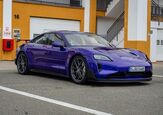
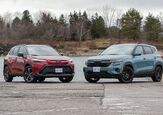









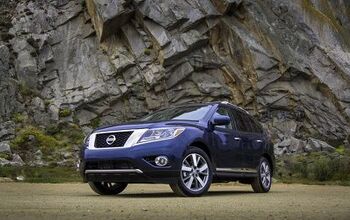
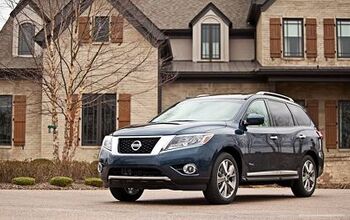




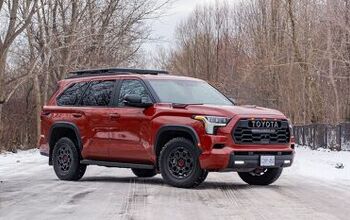
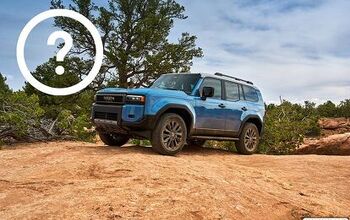


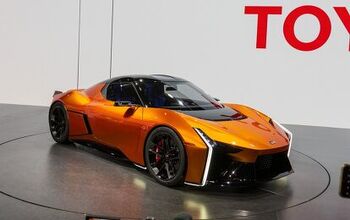



Comments
Join the conversation